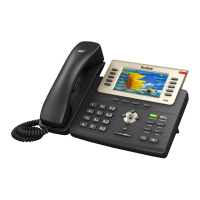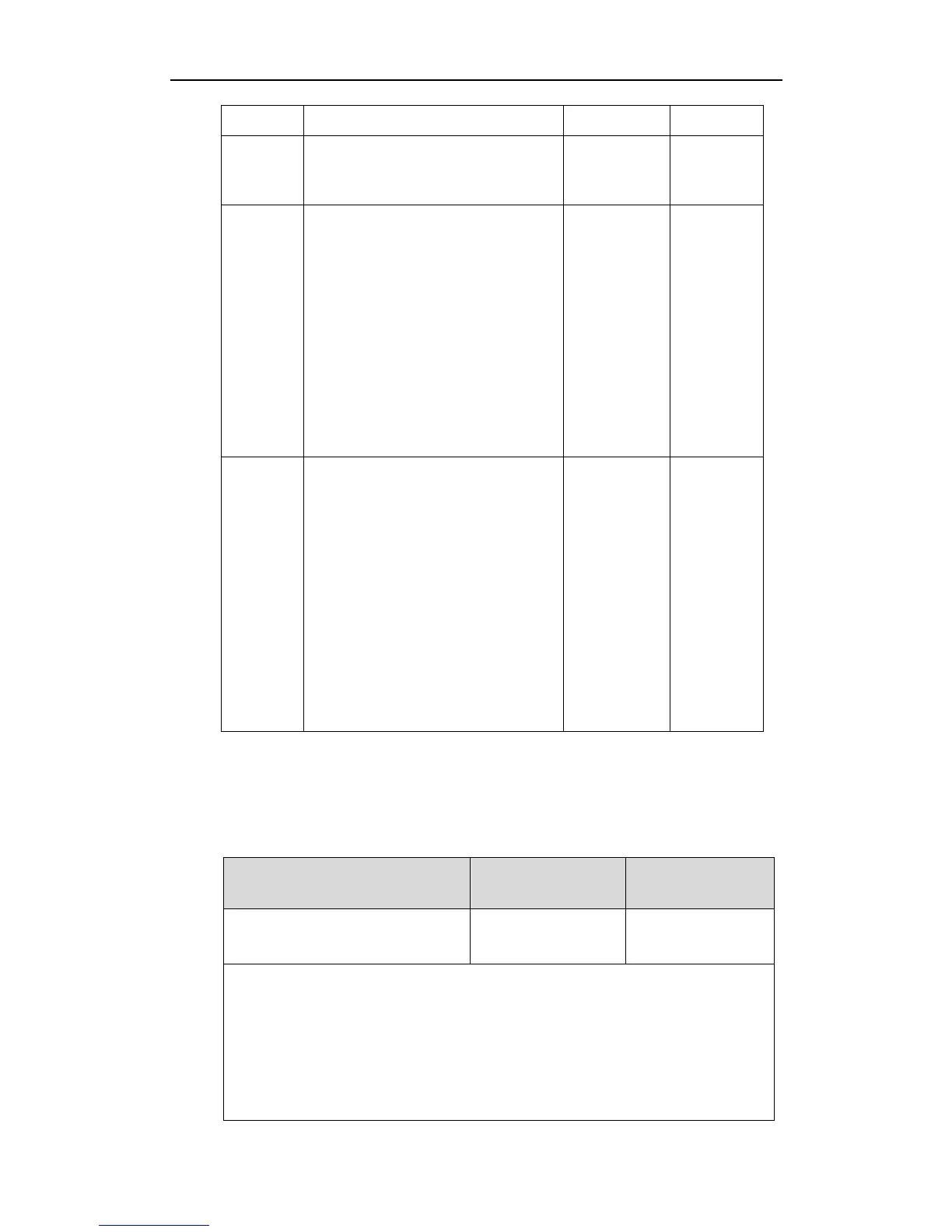Configuring Basic Features
87
Keys not Locked: Answer and Reject
soft key; OK, X, HEADSET, volume key
and Speakerphone key.
Pre-dialin
g/Dialing
screen
Allow Behavior: You are allowed to
press the Line Key (key type is line),
input or modify numbers, dial
emergency numbers and return to idle
screen.
Keys not Locked: IME, More, Cancel,
Send, Delete and Line soft key; line
key (key type is line), X, OK, volume
key, Speakerphone key, digit keys,
HEADSET key and “*”/”#” (key as
send).
The same as
All Keys, but
you can dial
any number.
The Menu
key (key
type is
menu) is
locked.
Allow Behavior: You are allowed to
end the call, initiate a new call to dial
the emergency number and
hold/resume a call.
Keys not Locked: EndCall, Cancel,
Resume, NewCall soft key; line key
(key type is line), digit keys, X, volume
key, MUTE, HEADSET and
Speakerphone key.
Note: Pressing X key to end the call is
not applicable to SIP-T23P/T23G/T21(P)
E2 IP phones.
The same as
All Keys, but
you can dial
any number.
The Menu
key (key
type is
menu) is
locked.
Phone Lock Key
For more information on how to configure the DSS Key, refer to Appendix D: Configuring
DSS Key on page 549.
linekey.X.type/
programablekey.X.type
Refer to the
following content
Description:
Configures a DSS key as a phone lock key on the IP phone.
The digit 50 stands for the key type Phone Lock.
For line keys:
X ranges from 1 to 29 (for SIP-T48G)

